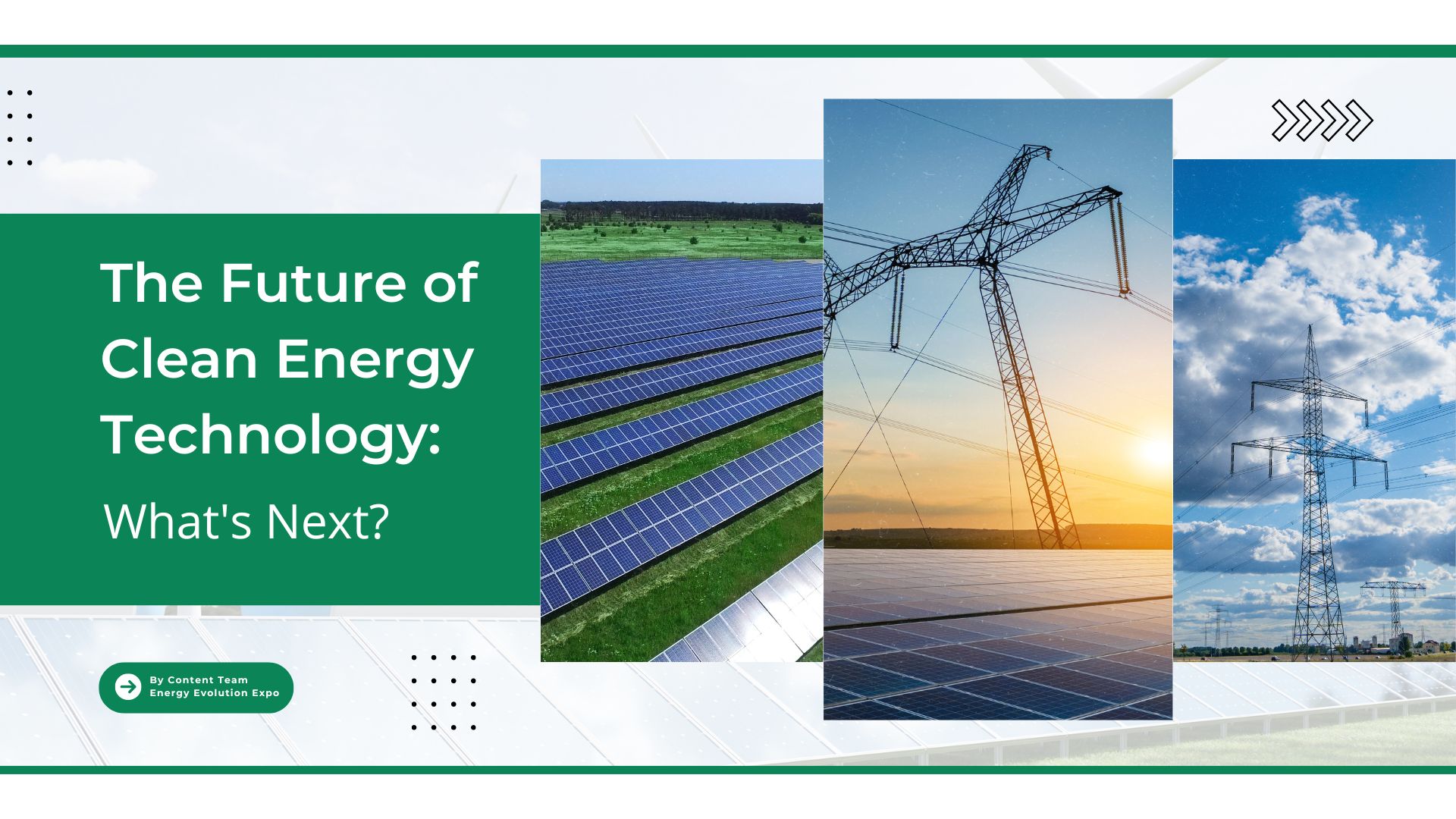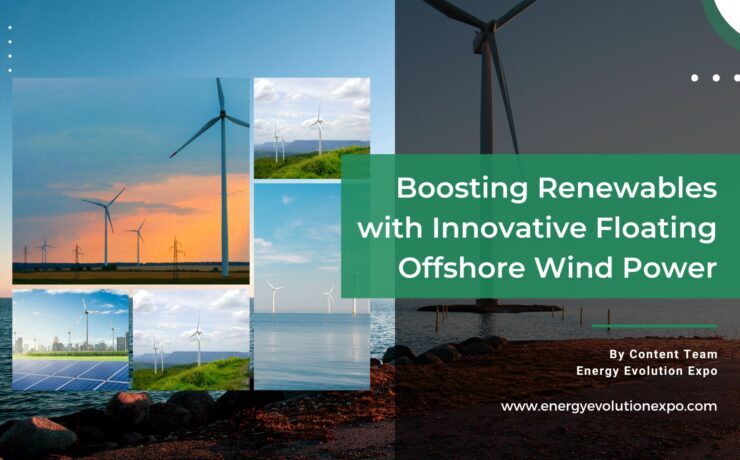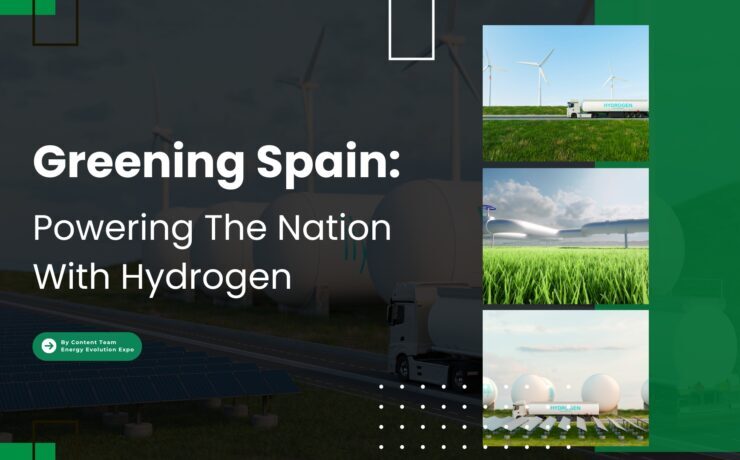The Future of Clean Energy Technology: What’s Next?

Clean energy is derived from renewable, emission-free sources that do not contribute to air pollution when utilized, in addition to energy conserved through efficiency measures.
There exists a certain intersection between clean energy and green or renewable energy sources, although they are not synonymous. To discern the disparity between them, it is beneficial to comprehend their definitions. Clean energy pertains to energy obtained from sources that do not emit air pollutants, whereas green energy is derived from natural sources.
Despite frequently being considered interchangeable, these two forms of energy possess subtle distinctions. Renewable energy is the electricity produced from sources that are continually replenished. These sustainable energy sources are inexhaustible unlike fossil fuels and natural gas, and encompass wind and solar energy. Although the majority of green energy sources are considered renewable, it is worth noting that not all renewable energy sources are universally recognized as being environmentally friendly.
One example of this is hydropower, which is indeed a renewable resource, but some individuals argue that it is not considered green due to the potential environmental damage caused by deforestation and industrialization associated with the construction of hydro dams. The ideal scenario for clean energy is achieved when green energy intersects with renewable energy, as evidenced by technologies like solar and wind power. Clean energy aims to generate power without causing detrimental environmental effects, such as the emission of greenhouse gases like carbon dioxide.
Numerous sources of renewable energy fall under the category of clean energy, such as wind power, certain hydro resources, and solar-generated energy. Clean energy offers environmental and economic advantages, notably a decrease in air pollution. Furthermore, a diversified clean energy supply mitigates reliance on imported fuels and results in cost savings due to the natural replenishment of resources, eliminating the need for extraction and transportation processes associated with conventional fuels like oil and coal. Additionally, a mix of clean energy sources enhances industrial growth by generating employment opportunities for the development, production, and installation of future clean energy technologies.
Opportunities Clean energy Technologies
1. Renewable Energy Expansion:
Progress in renewable energy technologies is leading to notable enhancements in efficacy and cost efficiency, notably in solar photovoltaic (PV) and wind power sectors. Solar power has experienced substantial growth, demonstrated by perovskite tandem cells achieving efficiencies exceeding 33% in controlled environments. This development suggests the potential for increased electricity production at reduced expenses when integrated with conventional silicon cells. Furthermore, solar capacity in the United States has risen sharply, with projections indicating small-scale installations could reach 55 gigawatts by the conclusion of 2024.
Advancements in wind energy, such as floating wind farms, are progressing despite facing significant initial costs and logistical hurdles. The United States has set a goal to establish 15 GW of floating offshore wind capacity by 2035, a move that is expected to greatly bolster the renewable energy industry. These innovative technologies are underpinned by robust policy frameworks in key regions like Europe and the United States, all aimed at promoting the expansion and integration of renewable energy sources.
Energy storage continues to be a vital factor in managing the sporadic characteristics of renewable energy. While lithium-ion batteries currently hold a prominent position in the market, emerging technologies like iron batteries are proving to be cost-efficient options for grid storage, which is crucial for ensuring a consistent energy provision. These progressions collectively improve the practicability of incorporating a higher percentage of renewables into the energy grid, thereby bolstering endeavors worldwide to reduce carbon emissions.
2. Smart Grid and Energy Management:
Digital technologies implemented in power grids are making significant strides in improving the management and distribution of electricity. Smart grids, which are equipped with advanced sensors, communication systems, and data analytics, play a vital role in increasing the efficiency, reliability, and security of energy distribution networks. Through the use of these systems, utilities can dynamically monitor and control electricity supply, effectively addressing challenges such as grid stability and peak load management. Moreover, smart grids enable the integration of renewable energy sources by balancing the fluctuating supply of solar and wind power with real-time demand.
This equilibrium is maintained through sophisticated forecasting and control mechanisms that optimize energy distribution and minimize wastage. By leveraging real-time data, smart grids adjust energy flows to match consumption patterns, thereby ensuring the effective utilization of renewable energy. Furthermore, demand response technologies integrated into smart grids facilitate the monitoring and control of energy usage in real-time.
These technologies promote the practice of shifting energy consumption to off-peak hours or diminishing usage during peak-demand periods, thereby improving the efficiency of the energy system. This strategy not only aids in balancing the supply and demand of energy but also boosts energy efficiency and lowers costs for both utility providers and consumers.
3. Green Hydrogen Economy:
Green hydrogen, produced by water electrolysis powered by renewable energy sources, is increasingly emerging as a crucial component in the shift towards clean energy. An exemplary illustration of this is the construction of the world’s largest green hydrogen plant in NEOM, Saudi Arabia. This plant is utilizing abundant solar and wind resources to facilitate electrolysis on a grand scale, showcasing the feasibility of large-scale green hydrogen production with the help of renewable energy sources.
Progress in fuel cell technology is fueling the advancement of the hydrogen economy. These cells, known for converting hydrogen into electricity, are increasingly being adopted across different industries. As an illustration, Plug Power, a renowned figure in the field of hydrogen fuel cells, has successfully implemented more than 69,000 fuel cell systems and built over 250 hydrogen refueling stations on a global scale. The firm is dedicated to developing a holistic hydrogen ecosystem that spans from production to distribution, with a focus on applications in material handling, electric mobility, and power generation.
Green hydrogen shows promise beyond transportation, extending to industrial sectors such as steel and cement production, offering substantial reductions in carbon emissions. Hydrogen-based direct reduction in steel manufacturing emerges as a technology that can replace carbon-intensive processes, underscoring hydrogen’s role in decarbonizing heavy industries.
The growing adoption of green hydrogen is bolstered by escalating political and business support, evidenced by policies and investments targeting technology scalability and cost reduction. This comprehensive strategy seeks to seamlessly integrate hydrogen into the energy landscape, enabling a shift towards a more environmentally friendly and sustainable energy future.
4. Electrification of Transportation:
Progress in the field of electric vehicles (EVs) is characterized by significant advancements in improving the affordability and efficiency of these vehicles. Key factors driving this progress in 2024 include advancements in battery technology and increased investment in charging infrastructure. A notable example is the expected substantial increase in demand for lithium-ion batteries, which are essential for EVs, estimated to reach approximately 4,700 GWh by 2030. This rapid expansion is being supported by innovations and the development of extensive charging networks. Pennsylvania, for instance, is actively expanding its DC fast-charging infrastructure, which is capable of charging an EV in just 20-30 minutes, thus enhancing the convenience of EV travel.
Furthermore, Norway serves as a prime example of the effective incorporation of electric vehicles, as electric cars hold a significant 91.5% market share as of March 2024. This transition is reinforced by governmental regulations that prioritize fully electric vehicles above hybrid options.
Apart from electric vehicles, alternative fuel options like biofuels and synthetic fuels are under investigation to reduce carbon emissions in sectors like aviation and maritime shipping, where transitioning to electric power may be more complex. These initiatives underscore a holistic strategy to diminish transportation-related emissions by utilizing a blend of electrification and cleaner fuel alternatives.

5. Carbon Capture, Utilisation, and Storage (CCUS):
Direct Air Capture (DAC) technologies are increasingly recognized as vital instruments for addressing climate change by extracting CO2 directly from the atmosphere. According to the International Energy Agency’s projections, the scale of DAC technologies must expand significantly to capture more than 85 million tons of CO2 annually by 2030 and close to 1 billion tons by 2050 in order to achieve global climate objectives. Presently, there are 27 operational DAC facilities globally, predominantly situated in Canada, Europe, and the United States.
Recent progress has led to the establishment of large-scale DAC facilities, like the one in Iceland, which has the capacity to capture up to 4,000 tons of CO2 per year and store it underground in basalt formations. Enterprises such as Climeworks and Carbon Engineering are at the forefront of this movement, utilizing renewable energy to fuel their activities and promote sustainability.
Additionally, the use of captured CO2 is leading to the emergence of new economic prospects. Advancements have allowed for the transformation of CO2 into practical commodities such as synthetic fuels, construction materials, and carbon fiber, thereby presenting financial motives for the acceptance of Direct Air Capture (DAC) technologies.
One illustration of this is CarbonCure Technologies, which incorporates captured CO2 into the manufacturing of concrete, resulting in decreased emissions and enhanced material characteristics. Despite enduring obstacles like elevated expenses and energy demands, continuous research endeavors and conducive regulations are indispensable in the sustained progress and implementation of DAC technologies.
6. Nuclear Energy Innovations:
Progress in the field of nuclear energy has been notable, especially in the advancement of Small Modular Reactors (SMRs) and fusion energy. The development of SMRs, exemplified by projects led by X-energy, presents a safer, more adaptable, and cost-efficient option compared to traditional nuclear power stations. Such reactors, including the Xe-100 model, are engineered to be inherently secure, utilize sophisticated fuels like TRISO-X, and can be utilized in various environments, including industrial complexes and isolated regions. Notably, X-energy has established a training facility with state-of-the-art simulation technology to train personnel for the integration of these reactors.
Simultaneously, advancements are being made in fusion energy research as companies and research institutions are investigating different strategies to develop a functional and sustainable fusion reactor. Notable projects include ITER and private ventures like those led by companies such as Commonwealth Fusion Systems, all striving to establish fusion as a viable energy source.
These endeavors are focused on utilizing nuclear fusion’s potential to generate practically limitless and environmentally friendly energy once technological and economic obstacles are surmounted. Small modular reactors (SMRs) and fusion reactors are at the forefront of nuclear innovation, offering the possibility of delivering dependable, eco-friendly energy and playing a critical role in meeting future energy requirements while addressing concerns related to climate change.
7. Policy and Investment:
Various governments across the globe are implementing strong policy frameworks and incentives to expedite the deployment of clean energy technology. An example of this is the Biden administration, which has allocated significant resources towards enhancing grid infrastructure and promoting clean energy manufacturing. Through initiatives such as the Inflation Reduction Act and Bipartisan Infrastructure Law, the government has facilitated investments exceeding $30 billion in grid upgrades and close to $80 billion from the private sector towards clean energy manufacturing in the last year. Furthermore, China has revealed plans to invest approximately $680 billion in clean energy by 2024 with a specific focus on solar cells, lithium batteries, and electric vehicles.
Private investments play a significant role in driving innovation and expanding clean energy production. In the United States, private investments in clean energy have surpassed $270 billion in the previous year, facilitating the creation of 184,850 MW of new utility-scale clean energy capacity and generating nearly 30,000 manufacturing positions. On a global scale, clean energy investments totaled $1.8 trillion in 2023, experiencing an annual growth rate of approximately 10% since 2019, largely driven by advanced economies and China. The collective endeavors of government policies and private sector investments are vital for the shift towards a sustainable energy landscape, promoting technological progress, and combating climate change.
Clean energy technology is crucial for addressing global challenges such as climate change, environmental degradation, and energy security. By reducing greenhouse gas emissions, these technologies play a key role in mitigating global warming and preserving ecosystems. They enhance national energy security by reducing dependence on imported fossil fuels and stimulate economic growth through job creation and innovation. Additionally, clean energy technologies improve public health by reducing air and water pollution, contributing to a more sustainable and healthier environment.
Overall, the adoption and advancement of clean energy technologies are essential for achieving a sustainable, resilient, and prosperous future. We need to keep up with all recent innovations to reap maximum benefits and to facilitate a better understanding of the latest developments and trends in the Renewable energy Industry, various Conferences and Expos, which bring the Industry leaders together, serve as an all-inclusive platform.
The Energy Evolution Awards, Conference, and Expo organized by Next Business Media is making its debut in Spain in 2025. It will be a leading forum dedicated to honoring excellence in Energy Technology, showcasing innovations, and fostering collaborations. The events unite industry leaders, and visionaries to explore the latest advancements, tackle key challenges, and shape the future of Energy. The Energy Evolution Awards, Conference, and Expo will celebrate outstanding achievements, promote sustainable practices, and drive the Energy Industry forward into a technologically advanced sustainable era. Energy Evolution Awards, Conference, and Expo will be a platform for cultivating innovation and shaping a brighter, more efficient energy landscape.






